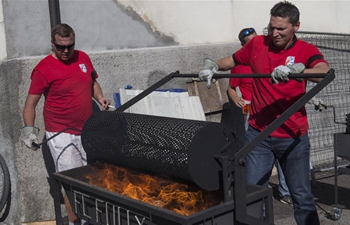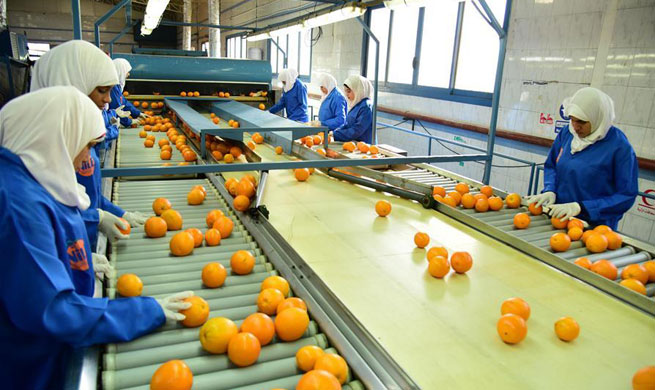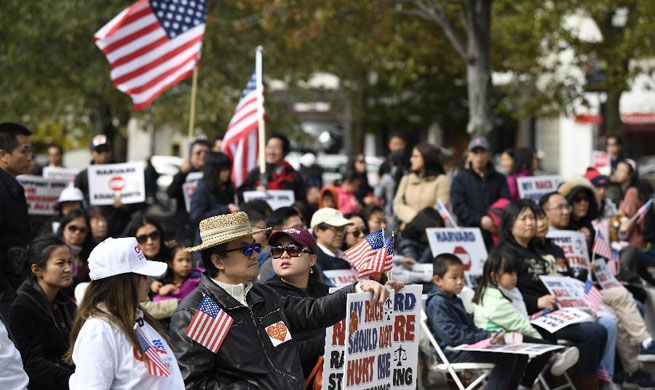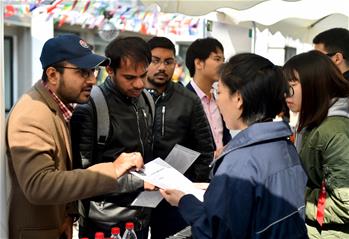SAN FRANCISCO, Oct. 14 (Xinhua) -- Only one in five children needs additional pain medication for relieving post-surgical anxiety and pain after they are given a therapy of virtual reality (VR) that induces a hypnotic state to keep them calm and relaxed, studies released Sunday showed.
Two studies were released at an annual medical conference of the American Society of Anesthesiologists (ASA) currently underway in downtown San Francisco from Oct. 13-17.
One of the studies showed that virtual reality hypnosis (VRH) reduced anxiety, total postoperative opioid consumption and vomiting in children after scoliosis surgery.
Among 21 children who participated in the study, scientists applied VRH treatment to 10 of them after surgery, while the other 11 children were put in a control group without receiving VRH support.
During the first 72 hours after surgery, every child who received VRH therapy was treated for 20 minutes in one session every day, when each of them, wearing a helmet and goggles linked to software, was immersed in VR-induced hypnosis, which helped them reduce stress and anxiety after painful medical procedures.
The experiment results indicated that only 20 percent of the children in the VRH group needed intravenous (IV) morphine to relieve surgical pain, while 62.5 percent who did not receive VRH treatment required supplemental pain medication.
"Morphine is associated with a sedating effect that may prevent patients from eating and walking sooner," said the study's co-author Girish Joshi, professor of anesthesiology and pain management at the University of Texas Southwestern Medical School, Dallas.
"The significant reduction in morphine use seen in patients given VRH means they can have a quicker recovery," the professor said.
Joshi said their research is the first study to assess the postoperative VRH use in children, which is aimed at decreasing both pain and the amount of opioid use.
The second study was led by its co-author Thomas Caruso, clinical associate professor of anesthesiology, perioperative and pain medicine at Stanford University in northern California.
The study, which was conducted on 600 patients aged six to 18 years old, suggests that a novel VR game that the children are allowed to play can adjust in real time the cognitive amount of information such as the play's music and color and reorient the game's display when a child changes position during medical procedures, thus reducing their anxiety and perception of pain.
Launched in 2017, the research is part of the Stanford program on childhood anxiety reduction through innovation and technology (CHARIOT) designed to employ VR technology to distract patients during high-anxiety periods, such as IV placement, blood draws, or dressing changes.
The VR game with real-time position-changing features can have the children who are allowed to play the game for two to 20 minutes be distracted from the anxiety that possibly arises before and during minor medical procedures such as IV placement, wound care or nasal endoscopy.
"Preliminary results have suggested our new VR game decreases anxiety and patients' perception of pain," Caruso said.
The researchers said their studies indicate that VR technology can be used as a non-pharmacological treatment that can distract patients safely during medical procedures in different clinical settings.
Founded in 1905, the ASA is an educational, research and scientific society with more than 52,000 members committed to maintaining the standards of the medical practice of anesthesiology.
The current annual conference is an event aiming to bridge research and technology with patient care, while facilitating face-to-face collaboration with more than 14,000 peers, thought leaders and anesthesia providers from more than 80 countries.













